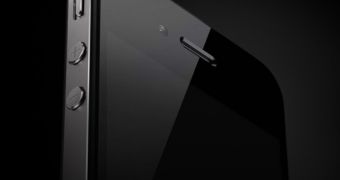If 67 pages of complaints regarding a faulty proximity sensor on the iPhone 4 aren’t enough to get Apple’s attention, maybe this YouTube video is. Tests executed in a similar manner to those revealing reception issues with the handset have concluded that Apple may need to throw in an additional fix when it rolls out the next iOS software update fixing signal bar display issues.
Softpedia reported on June 29 that Apple’s Discussions forums were beginning to fill with complaints regarding the proximity sensor on the new iPhone 4. According to the posts, iPhone 4 fails to properly determine when the device is held to the owners’ ear, resulting in constant flickering of the screen. This leads to the phone’s on-screen controls to become accessible. As the user touches the screen with their cheek or ear, certain functions (like mute sound, or end call) may be activated, resulting in frustration for these customers.
“I'm having an issue with the Proximity Sensor not properly detecting when i'm holding my phone to my ear”, a user identified as mdalegre wrote in a thread entitled “Issue with Proximity Sensor during calls”. He continues by saying, “I can confirm that the iPhone sensor is working by covering it with my finger, but when held to my face, the screen blinks as if it cannot decide to disable the screen or enable it. It results on me hanging up, putting calls on mute, and dialing numbers accidentally while i'm on the phone. This occurs on 90% of my calls.”
A report over at GSMArena seems to confirm the issue via a video comparing how iPhone 4 behaves when a mouse pad is being placed on top of its upper side, covering the proximity sensor. An iPhone 3GS is put to the same test, simultaneously, for comparison. As expected, “the new proximity sensor fails to do its job very well,” the site acknowledges, adding that the screen turns on “when there IS an object nearby,” rather than when the sensor is able to receive light.

 14 DAY TRIAL //
14 DAY TRIAL //